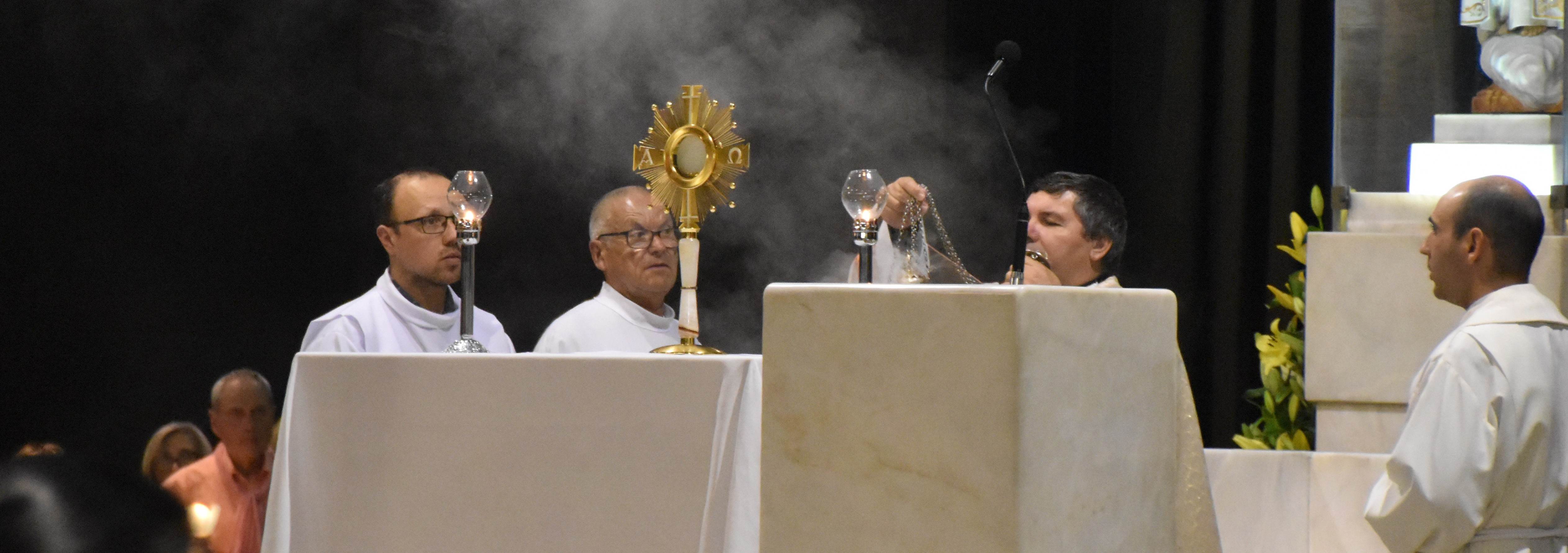Eucharistic Exposition and Benediction – Part I
National Liturgical Council

For sometime the once popular Benediction and Adoration has been in decline but more recently a growing movement has seen a renewal in these traditional celebrations. Benedict XVI ‘heartily recommended the practice of Eucharistic Adoration’, specifically suggesting ‘children be taught the meaning and the beauty of spending time with Jesus, and helped to cultivate a sense of awe before his presence in the Eucharist’. (SC 67).
The term ‘benediction’ comes from two Latin words: 'Bene' meaning ‘well' and 'dicere' meaning ‘to speak’. Ritual Benediction is a short invocation for divine help, blessing and guidance, usually at the end of public worship.
Jewish Roots
Ritualised benedictions, known as Berachot, developed in early Judaism and were commonly a blessing upon fulfilling a mitzvah or divine commandment. The Priestly Blessing given by the Kohenim (Jewish priests descended from Aaron) became the most important form of Benediction.
Early Christians incorporated ritualised benedictions and adoration into their liturgical worship. Echoing Jewish practices the common Benediction formula copied that given to Moses by God. (Numbers 6:24-26).
In the Middle Ages, the Church developed the extra-liturgical pious practice that most closely resembles present day Benediction and Adoration: blessing with the Blessed Sacrament exposed in a monstrance after a period of adoration which most often includes hymns, readings and prayers.
Church Today
Benediction and Adoration developed as a secondary purpose of the custom of reserving the Blessed Sacrament originally and primarily for the administration of Viaticum, ‘food for the journey’, to those in danger of death.
The Church’s rite Holy Communion & Worship of the Eucharist Outside Mass (HCWEOM 1973) outlining the norms for Benediction, points out that it is a ‘praiseworthy practice’ and that ‘this cult of adoration rests upon an authentic and solid basis’, namely the authentic presence of Christ in the Blessed Sacrament (No. 5).
Paul VI taught that while Christ’s presence is also in the Word and the assembly, he is present in the Eucharist in ‘a way that is completely unique’ for the ‘whole and entire Christ, God and man, is substantially and permanently present in the sacrament’. This permanent presence ‘is called real, not to exclude other kinds of presences as if they were not real, but because it is real par excellence’. (Mysterium Fidei 34, 39)
Faith in the real and continuing presence of Christ in the reserved Eucharist ‘leads naturally to external, public expression of that faith’ an example being Benediction and Adoration. (HCWEOM 5)
‘The celebration of the Eucharist in the sacrifice of the Mass is the true origin and purpose of the worship shown to the Eucharist outside Mass’ (Eucharistae Sacramentum 2). Benediction and Adoration ‘extends’ the grace of the Mass and in no way ought to supplant its position in the life of the faithful.
In order to reinforce the Mass’s importance for the faithful the Church declares that ‘to express the sign of the Eucharist, it is more in harmony with the nature of that celebration that, at the altar where Mass is celebrated, there should if possible be no reservation of the sacrament in the tabernacle from the beginning of Mass. The Eucharistic presence of Christ is the fruit of the consecration and should appear to be such’ (HCWEOM 6, ES 6). Likewise exposition of the Blessed Sacrament ought not to occur during Mass.
Vatican II taught that ‘all the sacraments, and indeed all ecclesiastical ministries…are bound up with the Eucharist and directed towards it. For in the most blessed Eucharist is contained the entire spiritual wealth of the Church, namely Christ himself . . . (SC 16).
Worship of the Eucharist in Benediction and Adoration helps foster what Benedict XVI calls ‘an authentically Eucharistic Christian spirituality’ (SC 94), with the reminder that ‘an authentically Eucharistic church is a missionary Church’. (SC 84).
This article was originally published in ‘Prayer and Devotions’. © Diocese of Parramatta. 2007. Reprinted with permission.
